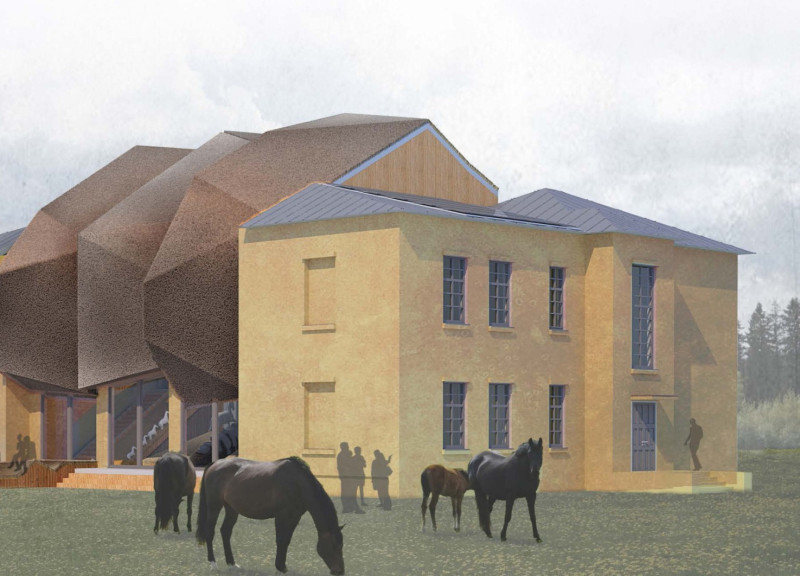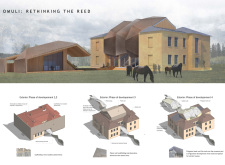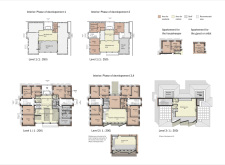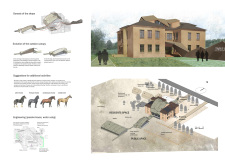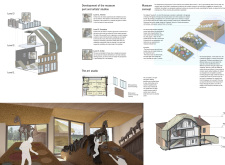5 key facts about this project
The OMULI project reinterprets traditional reed architecture through modern design principles, situated in Latvia's scenic landscape. This architectural endeavor focuses on creating a multifaceted space that accommodates living, artistic activities, and community engagement. The project emphasizes sustainable practices and materials while integrating local culture into its design.
The building features a dynamic form accentuated by curvilinear rooflines, which mimic the natural landscape. This design approach not only enhances aesthetic appeal but also invites an exploration of space through its organic shapes. The use of a 'reed canopy' serves as a significant structural element, reflecting historical architectural practices while providing shade and shelter for public activities. The layout incorporates communal areas, transforming the building into a vibrant cultural hub.
Integration of Local Materials
A critical aspect of the OMULI project is its commitment to utilizing locally sourced materials. Laminated wood serves as the primary structural component, offering strength while aligning with sustainable practices. The use of reeds is central to the design, utilized not only for their historical significance but also for their insulating properties and eco-friendly characteristics. Plank facades provide texture and rhythm to the exterior surface, while reconstructed brick is incorporated to preserve architectural heritage. Large panes of glass enhance natural light flow and strengthen the connection between interior spaces and the surrounding environment.
Flexible Space Design
The interior layout is organized to facilitate a variety of functions, catering to both private living and public engagement. The inclusion of workshops and artists' studios promotes collaboration and creativity, allowing various forms of artistic expression to flourish. Strategic placement of communal spaces, such as performance areas and an outdoor café, encourages interaction among users and fosters a sense of community. The architectural design also incorporates passive energy solutions, ensuring efficient climate management within the building.
This project exemplifies a thoughtful integration of historical context and modern architectural strategies. It represents a forward-thinking approach to architecture that values local culture and environmental stewardship. For those interested in a deeper understanding of the OMULI project, exploring the architectural plans, sections, and various design elements will provide further insight into its unique architectural ideas and concepts.


